 September 2020
Minnesota Archaeology Month: Digging Deeper
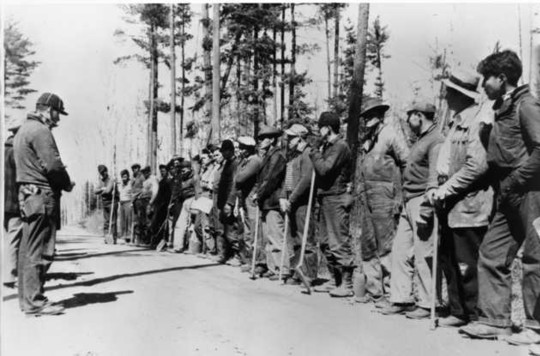 Civilian Conservation Corps Indian Division workers from Nett Lake Reservation. PHOTO: Minnesota Historical Society
archaeology /är-kē-ˈä-lə-jē/
By studying clues left by those who came before us, archaeologists' work helps us to better understand the human history of a place.
There are archaeological stories all around our state, including in state parks, trails, and even public water accesses. From ancient indigenous sites to former military forts, fur trading posts, and pioneer homesteads, these lands are rich with history dating back thousands of years. Some more relatively modern archaeological sites include retired fire towers and architectural structures from the Civilian Conservation Corps (CCC) and Works Progress Administration (WPA) eras.
While leaf-peeping this fall, take a hike into history and walk the footsteps of those who came before you.
All the best for this new season and, don't forget... Mask-up when indoors or when social distancing is not possible outdoors, wash your hands, and be kind to others!
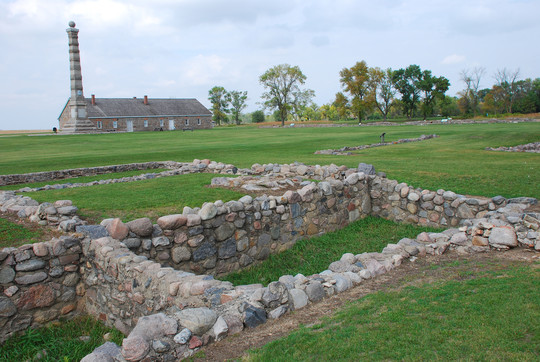 Explore the historic ruins of a former military fort and once self-sufficient community at Fort Ridgely State Park and learn about the U.S.-Dakota War of 1862.
Some archaeological finds at Fort Ridgely State Park pre-date the US-Dakota War!
Want to learn more?
Scroll down for more information on recent digs and finds at Minnesota State Parks and Trails and check out these resources:
-
Minnesota State Archaeologist website;
-
Bound by Earth video;
-
Learning from Place: Bdote, an immersive field trip to significant Dakota sites in the Twin Cities guided by Dakota community members;
- Indigenous Tribes: Find out who lived where with this USDA webapp;
-
Minnesota Historical Society website and historic sites.
Erratas: Last issue we made a reference to a beloved children's book, "Brown Bear, Brown Bear, What Do You See?" by Bill Martin, Jr. and Eric Carle, but we want to reassure you there are no brown bears in Minnesota, only black bears.

 CCC camp in Cook County, MN. PHOTO: WTP.org
In addition to being buried below our feet, sometimes history is hidden by being left untold. Bringing truth to history means addressing the incomplete lessons taught in many school history classrooms and textbooks. It means shedding light on the unfair and often cruel treatment of different cultural groups throughout state history, and calling out biased representation in the stories that have been told.
Did you know...
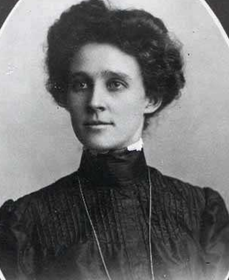
- That Mary Gibbs , commissioner of Itasca State Park, and the first woman in the U.S. to hold the position of park commissioner, stood up against the lumber barons of the Northwoods?
(R) Mary Gibbs in 1903. PHOTO: Minnesota Historical Society
- That segregation and exclusion were rampant in the Civilian Conservation Corps (CCC) and Works Progress Administration (WPA), federal relief programs of the Great Depression era that helped build many of our state and national parks?
Women were not allowed to participate in the CCC. In addition, the CCC-Indian Division in Minnesota provided separate work camps for Ojibwe and Dakota men on and near the reservations. Most African American enrollees were sent to segregated work camps, such as Company 1728 near Temperance River State Park.
In 1935, the only African American WPA camp in Minnesota was located at Mendota Heights but later relocated to Becker County due to complaints and petitioning by local residents.
|
 African American CCC Company 1728, Camp Temperance F-19, Tofte, 1934. PHOTO: Minnesota Historical Society
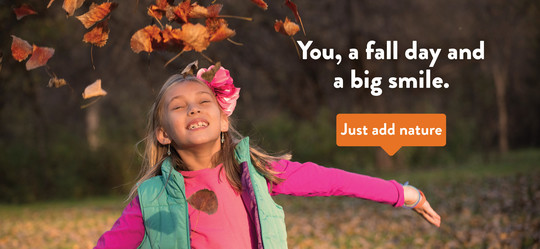
 The faces and stories of our visitors and staff.
 I love biking, I love camping, I love riding my dirt bike, hiking, swimming, skiing and running in my public lands because I want to know the place I call home. I want to know the land in the dark, and in the light. I want to know what it’s like when I traverse it slow, or fast. I want to know what trails cross rivers and streams in the winter that I can’t traverse in the summer. There are trails to places you can’t reach in a car!
As an indigenous person, I view the topic of public lands through a nuanced lens. I struggle, sometimes, understanding that much of the public land we have nowadays came from further dislocation of native peoples—however, I feel extremely fortunate to be a visitor on these lands. I’m grateful we still have places that we can all play.
Public lands are for all of us to enjoy and explore and put our bodies in motion. If we go outdoors with friends or family, we can explore together and form deeper personal connections. I believe that all of us who utilize public lands are connected, so the next time you see someone playing in public lands in a way different than you are, I suggest a smile and a nod.
More inspiration and wisdom from Alexandera Houchin.

Did you know that only 5% of land managed by the Division of Parks and Trails is developed for recreational use? The remaining 95% is managed by the Division for the purpose of preserving an accurate representation of Minnesota’s natural and historical heritage. Archaeologists step in to ensure nothing is missed during projects to develop areas for recreation. Here are examples of findings from these projects:
 Lake Vermillion obsidian sherd
Project: Development of Day Use Area, 2010
Archaeologists found 155 flaked obsidian pieces at Armstrong Bay making it the most obsidian rich archaeological site in Minnesota. Obsidian is a black volcanic glass not native to Minnesota. How did it get here? This remains unknown—it could have been through travel or trade.
WHO: "The people using the [area] were likely of Cree or Assiniboine ancestry. Bois Forte band members believe Ojibwe people moved into this region by the 1600s. "
Get the whole story on this discovery from the MCV magazine.
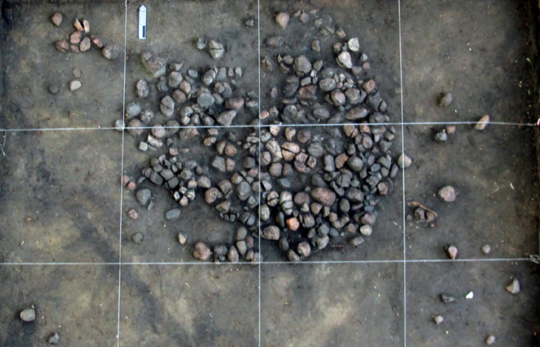 Top view of the fire-cracked rock feature at Glendalough State Park and the sections in which the archaeologists divided the feature to dig in.
Project: Bike Trail, 2011
Archaeologists excavated a site with 482 artifacts that included chipped stone flakes and tools, pottery, animal bone and one of the largest prehistoric earth ovens identified at an archaeological site in Minnesota. This hypothesized earthen oven was hand dug and is identified by the large concentration of fire-cracked rock. Radiocarbon dating and organic residue tests showed that the oven is approximately 650 years old and that the native people who lived in the area used the ovens to cook nuts, wild rice and maize.
WHO: The artifacts found fit in the Plains Village and Oneota Tradition (A.D. 1000 - A.D. 1650)
Interested in earth ovens? Read more.
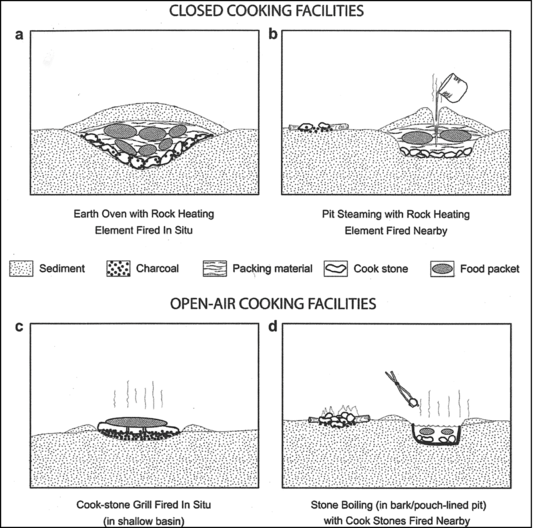 Earth oven diagram from the 2009 paper: "Hunter-Gatherer Earth Ovens in The Archaeological Record: Fundamental Concepts" by Stephen L. Black and Alston V. Thoms
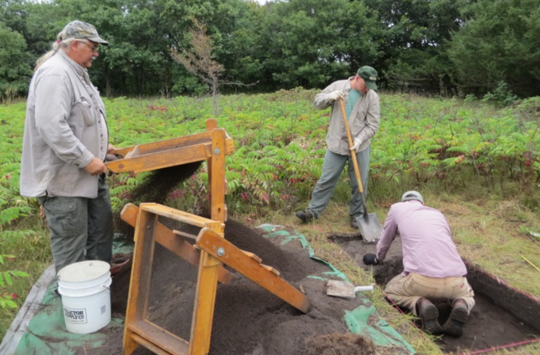 Minnesota Historical Society archaeologists LeRoy Gonsior, Charlie Yesberger, and Jacob Foss digging an excavation unit of 1 meter by 2 meters at 5 cm levels at a time in Minneopa State Park.
Project: Bison Pasture, 2014
Of the 7,907 artifacts found on this site, 98% were stone flakes, which occur when creating or sharpening a stone tool, a craft known as "flintknapping." These clusters of worked stone, vs. isolated pieces, give evidence of a "flintknapping" workshop, which has excellent potential for researching the utilization of the Minnesota River for transportation, lithic (stone) procurement, and trade of the prehistoric cultures of the Minnesota River Valley.
WHO: Most likely tied to the Dakota people. The artifacts show multiple occupations over time that date to Early Archaic Tradition (6000 B.C.) and Middle Archaic to Early Woodland Tradition (4000 B.C to 500 B.C).
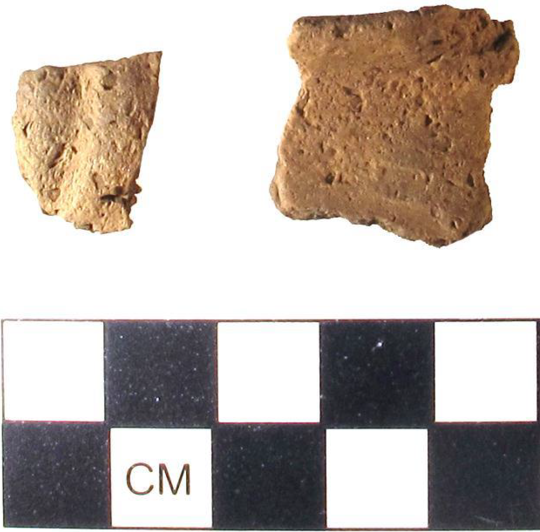 Two pottery sherds that were shell-tempered found at Wild River State Park. The black and white squares represent centimeters show actual size of artifact. "Archaeologists in the US use the metric system so that they can share information easier around the world," explained archaeologist Amy Ollila.
Project: Erosion Control, 2015
Archaeologists found a site that included prehistoric pottery sherds, stone flakes, a hammerstone and an anvilstone. The pottery was made by the American Indians by tempering the clay with grit or with shell: The decoration on these small pieces appear on a trailed line. The pottery sherd on the right is a rim fragment from a seed jar.
WHO: Ceramics found fit in the Woodland Tradition (1000 B.C. - A.D. 1650)
More on prehistoric pottery.
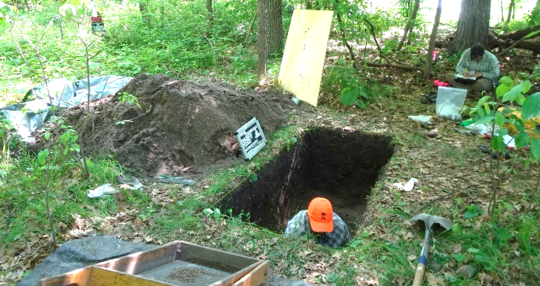 Minnesota Historical Society archaeologists Scott Tooker and Amy Ollila at the Lake Alexander PWA site.
Project: PWA Upgrades, 2020
Excavation at the Lake Alexander PWA has yielded invaluable artifacts. The likelihood of finding archaeological deposits were very high, as there had not been previous archaeological research on this site. Over 1,000 prehistoric artifacts were recovered from intact archaeological deposits, including prehistoric pottery, projectile points, and other stone tools. Evidence was found that this location could have been occupied as early as 3200 years ago.
The site was recommended as eligible for listing in the National Register of Historic Places.


Buy your vehicle permit online or over the phone at 218-595-7101. While you wait for your year-round permit to arrive in the mail, just write down your confirmation number and leave it on your car's dashboard while you are in the park.
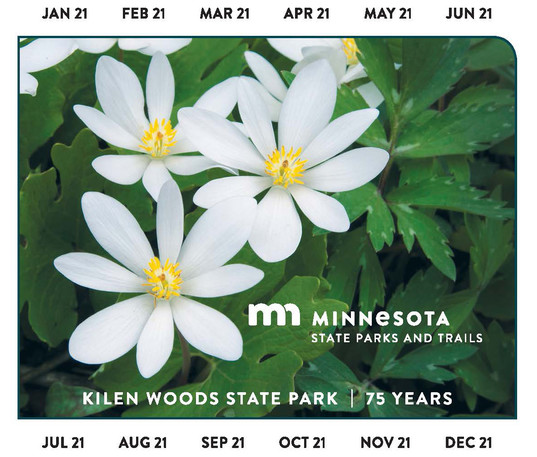

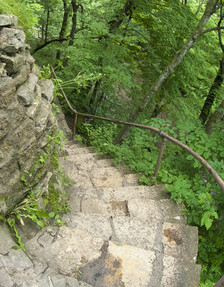
Help protect our cultural resources by upholding these ethics:
-
Pack out what you pack in.
- Respect archaeological structures.
- Leave artifacts where you find them.
-
If you discover an artifact, take a photo (geotagged, if possible) and report to park officials immediately.
- Metal detecting is not allowed in Minnesota state parks.
- Report vandalism immediately.
|
|